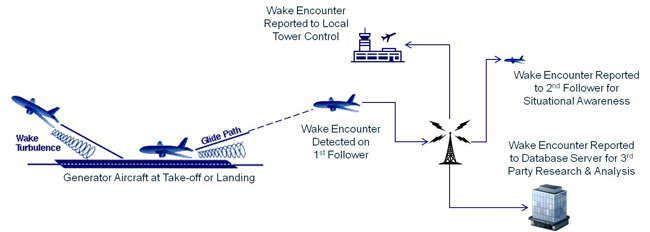 |
|

 All aircraft in flight leave behind them a pair of strongly spinning wakes from their wing tips. If following aircraft encounter these wakes, it can lead to a loss of control. Therefore, for flight safety, aircraft are separated in distance based on specific FAA rules. If the spacing is too large, the capacity of the airport and the overall national airspace system is adversely affected -- too small and safety may be reduced. Wake vortices are a critical constraint to aircraft separation and therefore airport capacity, which is already at or near limits at many major airports in the world. Improvements to current methods of spacing aircraft could significantly increase capacity, but there is currently limited awareness of wake encounters and information with which to assess spacing in real-time or to design new spacing schemes. ATR has been awarded a NASA contract to develop a system which will detect and transmit reports of wake encounters from an aircraft to other aircraft and air traffic controllers thereby significantly increasing safety of operations around airports. The system will be readily implemented on any modern commercial airliner to make these encounter reports in real-time. ATR's In Situ Wake Vortex Encounter Detection and Reporting System (VEDARS) system will:
ATR will also improve the accuracy and reliability of reported wind speed and direction (and hence crosswind estimation) by improving and validating an estimator for sideslip angle. A reliable and accurate crosswind estimate is a key component in predicting the transport of wakes. |
Benefits |